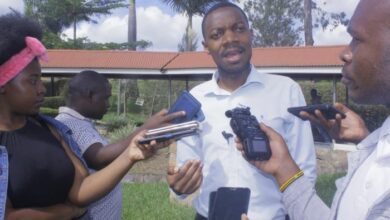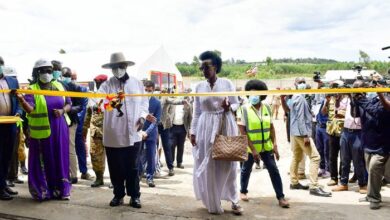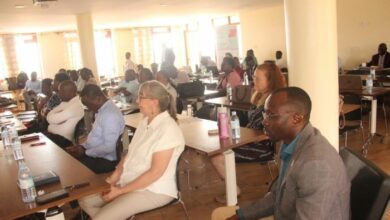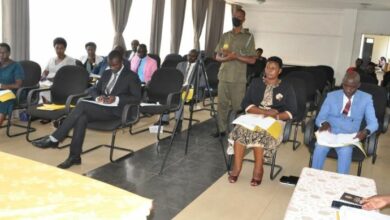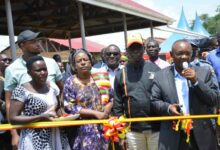Gov’t begins journey of redeveloping Kilembe mines
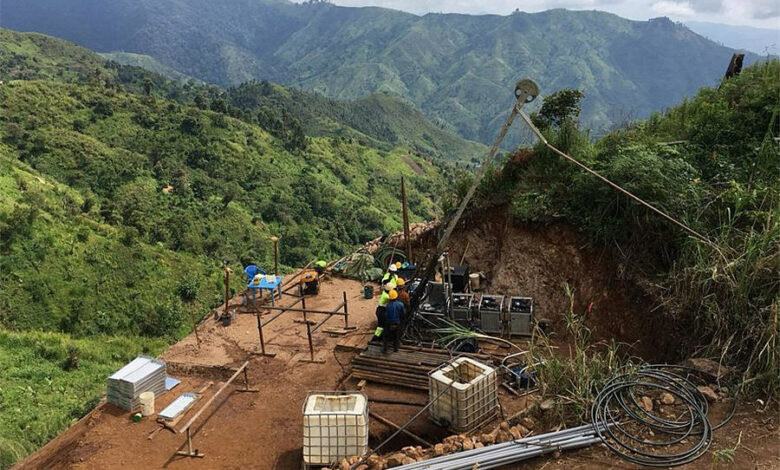
KASESE – The Government of Uganda through the ministries of Finance and Energy is to start the redevelopment of Kilembe Copper Mines located in the western district of Kasese that borders the Democratic Republic of Congo.
Kilembe mines, located below the Rwenzori Mountain, was a major source of foreign exchange for Uganda in the 1960s through 1970s. It was partly owned by Late Sir George David Kamurasi Rukidi III.
The mines comprise a greenfield exploration area, a brown field project comprising a hard rock copper mine and processing plant, a hydropower plant known as Mubuku 1, auxiliary mine facilities, cobalt-rich tailings, and associated minerals (collectively referred to as “Kilembe Mines”) operated by Kilembe Mines Limited.
However, the mines suffered a setback in 1977 after President Idi Amin Dada ordered the Canadian investors to relinquish control to ill-prepared Ugandan managers.
Amin’s decision was also fuelled by the steep fall of worldwide copper ore prices, which thereafter called for the complete closure of the mines in 1982 due to the degenerated smelter in Jinja, the global collapse of mineral commodity prices, dilapidated equipment, high inflation, and the insecurity at the time. And for thirty years, the mine has been dormant.
KML has since been under care and maintenance and the government has made several attempts at revival but all in vain.
Major plans started in 2019, when cabinet signed off the redevelopment of Kilembe copper mines which among other things calls for the expeditious sourcing of potential investors in the copper mines after the first group Tibet Hima failed.
And in a joint press statement issued on April 12, 2022, signed by Ruth Nankabirwa Ssentamu, the Minister of Energy and Mineral Development and Evelyn Anite, Minister of State for Privatization and Investment, government says it has partnered with the administrators of the estate of the Late Sir George David Kamurasi Rukidi III, the management of Kilembe Mines Limited, to redevelop Kilembe copper Mines.
“The management of Kilembe Mines Limited and the Ministry of Energy and Mineral Development, we are pleased to inform the general public that they have commenced the redevelopment of Kilembe Mines,” reads part of the press release
According to the release, both shareholders approve and consent to the process of recognizing the importance of redeveloping the mines.
Among the plans, the government confirmed the deployment of the UPDF Engineering Brigade which is working on the infrastructure that was washed away by the three devastating floods in 2020.
“We have deployed the UPDF Engineering Brigade to carry out restoration works and restore the mines to an attractive state. They are already on the ground,” reads part of the press statement
Among the destroyed property at the mines by the terrible floods include; tailings dam, Mobuku I hydropower plant, the industrial and domestic water system, the administration block, and workshops.
The two ministers also confirmed that the administrators of the estate of the late G.D.K.Rukidi III have been duly reinstated as shareholders in Kilembe Mines Limited.
“They are actively involved in this process and consent to the procuring of an investor”.
Revamping Kilembe copper mines is among the priorities of the Government of Uganda provided in the Third National Development Plan (NDPIII) 2020/21-2021/25 Mineral Development Programme to increase exploitation and value addition in selected resources for quality and gainful jobs in industrialization.
The government says that the redeveloped mining company will also increase the volume and value of copper, increase investment in the exploration and processing of selected minerals, and create more jobs in the mining sub-sector.
“Copper and Cobalt are critical minerals in making clean energy technologies for the current global transition to clean energy. The current price of copper is between USD 10,000 and 10,500 per tonne. So copper is a cornerstone for all electricity-related technologies and electrical equipment (wiring, motors, switches, transformers, and telecommunications).
Other common uses of copper include construction (roofing, plumbing), vehicles (brakes, wiring), architecture, industrial machinery (heat exchangers), added to precious metals to improve elasticity and often alloyed with Gold, kitchen appliances (sinks, table tops), jewelry, doorknobs, musical instruments, coins, gunmetals, as a metal alloy in the manufacture of boats and ships, among others.
Government adds that the redevelopment of Kilembe Mines will have a catalytic effect of facilitating industrialization, offering significant employment opportunities for Ugandans, and increasing revenue.
“To achieve this, we have invited companies to express their interest in partnering with the Government through a Mineral Production Sharing Agreement (MPSA). A MPSA partner shall be selected through a transparent open international bidding process”.
The government says that the restoration of the mines to an attractive state is one of the processes to attract serious investors to take on the mining sector.
Kilembe Copper mineralization in the Rwenzori Mountains is reported to have first been recorded in 1906 and has been explored since the 1920s.
In 1950, Kilembe Mines Limited (KML) was incorporated and production began in 1956. It steadily increased to a peak of about 18,000 tonnes of copper cathode per year in the early 1970s.
The operation included a copper smelter in Jinja, and copper concentrate was transported by the railway from Kasese to Jinja.
Currently Kilembe Mines Limited is a Public Enterprise incorporated as a company with majority shares held by the Government of Uganda (99.99%) and minority shares held by the Administrators of the Estate of the late G.D.K. Rukidi III.
The company is listed under the Public Enterprise Reform and Divestiture Act, Cap.98 (PERD Act).
https://thecooperator.news/nda-bans-a-local-health-energy-product-manufactured-in-kasese-district/
Buy your copy of thecooperator magazine from one of our country- wide vending points or an e-copy on emag.thecooperator.news

